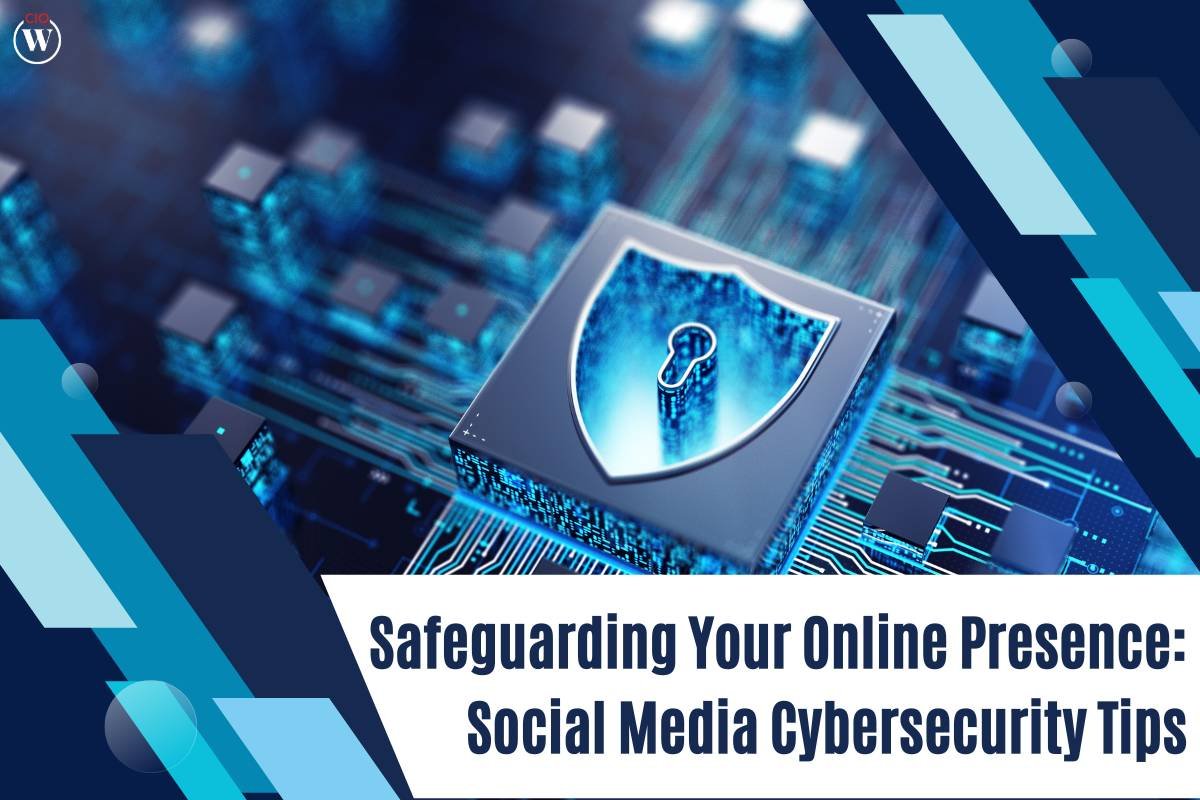In today’s interconnected world, social media has become an integral part of our daily lives. While it enables us to stay connected with friends, family, and the world, it also poses certain risks to our cybersecurity. With the increasing frequency of cyber threats and data breaches, it’s crucial to implement effective social media cybersecurity measures. In this article, we will explore essential Social Media Cybersecurity Tips to safeguard your online presence and protect your personal information from falling into the wrong hands.
Understanding the Risks
Before delving into Social Media Cybersecurity Tips, it’s essential to comprehend the risks associated with social media. Cybercriminals are becoming increasingly sophisticated, utilizing various tactics to exploit vulnerabilities and gain unauthorized access to user accounts. Common threats include phishing attacks, identity theft, account hacking, and the spread of malicious software. By staying informed about these risks, users can take proactive steps to mitigate potential threats.
Social Media Cybersecurity Tips
1. Secure Passwords:

One of the fundamental aspects of social media cybersecurity is ensuring the strength and uniqueness of your passwords. Use a combination of uppercase and lowercase letters, numbers, and special characters to create robust passwords. Avoid using easily guessable information like birthdates or names. Regularly update your passwords and refrain from using the same password across multiple platforms. Employing a password manager can assist in generating and storing complex passwords securely.
2. Enable Two-Factor Authentication (2FA):
Enhance the security of your social media accounts by enabling two-factor authentication. This additional layer of protection requires users to provide a second form of verification, such as a unique code sent to their mobile device, in addition to their password. 2FA significantly reduces the risk of unauthorized access, even if your password is compromised.
3. Be Mindful of Privacy Settings:
Social media platforms offer various privacy settings that allow users to control who can view their information and posts. Regularly review and adjust these settings to align with your desired level of privacy. Limit the audience for your posts, especially those containing sensitive information. Be cautious about sharing personal details such as your home address or phone number, and restrict access to your profile information to only trusted connections.
4. Beware of Phishing Attacks:
Phishing remains a prevalent method employed by cybercriminals to trick users into divulging sensitive information. Exercise caution when clicking on links or opening attachments, especially if they appear suspicious or are from unknown sources. Verify the legitimacy of messages before providing any personal information, and be wary of requests for login credentials or financial details.
5. Regularly Update Software and Apps:
Keep your social media apps and devices updated with the latest security patches and software releases. Developers often release updates to address vulnerabilities and enhance security measures. By staying current with these Social Media Cybersecurity Tips, you reduce the risk of falling victim to exploits that target outdated software.
6. Monitor Third-Party Apps:

Be selective about the third-party applications you connect to your social media accounts. Some apps request access to your profile information, and in some cases, they may have malicious intentions. Regularly review the list of connected apps on your social media profiles and revoke access to any that you no longer use or trust.
7. Educate Yourself on Social Engineering:
Social engineering tactics involve manipulating individuals to divulge confidential information. Be cautious of unsolicited messages or friend requests, especially if they seem out of character or request sensitive details. Verify the identity of individuals before engaging in conversations, and be skeptical of any requests for financial assistance or personal information.
8. Regularly Monitor Account Activity:
Stay vigilant by regularly monitoring the activity on your social media accounts. Check for any suspicious logins or unrecognized devices accessing your account. Most platforms provide tools to review login history and active sessions. If you notice any unusual activity, take immediate action to secure your account, such as changing your password and enabling 2FA.
9. Educate Yourself About the Platform’s Security Features:
Each social media platform provides specific security features and tools to enhance user protection. Familiarize yourself with these features, including reporting mechanisms for suspicious activities or content. Understanding these Social Media Cybersecurity Tips empowers users to take swift action in the event of a security incident.
10. Regularly Back Up Your Data:

In the event of an account compromise or data loss, having regular backups of your social media content is invaluable. Some platforms offer built-in tools for data export, allowing users to download their photos, posts, and other information. Additionally, consider using third-party backup services for an extra layer of protection.
Conclusion
As social media continues to play a significant role in our lives, prioritizing cybersecurity is essential to safeguarding our personal information and online presence. Implementing the aforementioned social media cybersecurity tips can significantly reduce the risk of falling victim to cyber threats. By staying vigilant, practicing good cybersecurity hygiene, and being aware of the evolving threat landscape, users can enjoy the benefits of social media while minimizing potential risks. Remember, your online security is in your hands—take the necessary steps to protect yourself and your digital identity.
Frequently Asked Questions (FAQs) on Social Media Cybersecurity:
1. What is the significance of using strong and unique passwords for social media accounts?
Using strong and unique passwords is crucial for social media cybersecurity because it significantly reduces the risk of unauthorized access. Cybercriminals often employ password-cracking techniques, and weak passwords make it easier for them to compromise accounts. By creating robust passwords and avoiding reuse across platforms, users enhance the overall security of their online presence.
2. How does two-factor authentication (2FA) enhance social media security?
Two-factor authentication adds an extra layer of protection to social media accounts by requiring users to provide a second form of verification in addition to their password. This additional step, often a code sent to a mobile device, adds a significant hurdle for potential attackers. Even if your password is compromised, 2FA helps prevent unauthorized access, enhancing the overall security of your social media accounts.
3. Why is it important to regularly review and adjust privacy settings on social media platforms?
Privacy settings on social media platforms allow users to control who can view their information and posts. Regularly reviewing and adjusting these settings is essential to align your online presence with your desired level of privacy. By limiting the audience for your posts and being mindful of what information is publicly accessible, you reduce the risk of exposing sensitive details to unauthorized individuals.
4. How can users distinguish phishing attacks on social media platforms?
Phishing attacks on social media often involve deceptive messages or links that aim to trick users into divulging sensitive information. Users can distinguish phishing attempts by being cautious of unsolicited messages, especially those containing suspicious links or requests for login credentials. Verifying the legitimacy of messages, avoiding clicking on unfamiliar links, and being skeptical of requests for personal information are key practices in identifying and avoiding phishing attacks.
5. What steps can users take to monitor and respond to suspicious activity on their social media accounts?
Monitoring social media account activity is crucial for identifying and responding to potential security threats. Users should regularly check their account login history and active sessions for any unusual or unauthorized access. If suspicious activity is detected, taking immediate action, such as changing passwords, enabling 2FA, and reporting the incident to the platform, can help secure the account and mitigate potential damage from security breaches.









